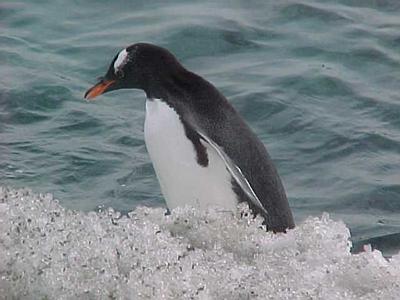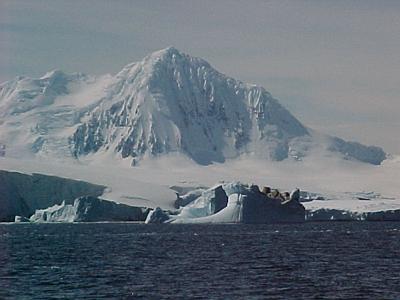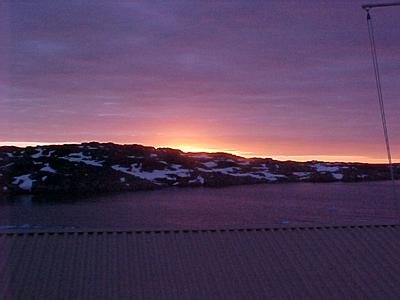22 November, 2000
Hello everyone,
I have had several e-mails from some students at MacGregor State School in
Australia. They wanted to know what the lowest temperature recorded while I
was in Antarctica? There have been a couple of days it has been -2 degrees
Celsius and a wind chill of -20 degrees Celsius. The peninsular area where
Palmer station is located has very mild weather for Antarctica, but changes
very rapidly. The highest temperature has never been over 2 degrees Celsius
while I have been here.
They also would like to know if I found the Adelie penguin interesting and
how I was able to get so close to them. I really enjoy the wildlife in
Antarctica. The Adelie penguins I visited on Sunday were displaying a lot
of interesting behaviors, such as fighting over pebbles. I will probably
get back to Torgersen Island this weekend and be able to share more on the
Adelies, and if you have specific questions related to the penguins just
let me know and I will check with one of the experts here. I haven't had an
opportunity to visit a Gentoo penguin colony yet but we had one come visit
the station today. You can see her picture below. I was able to get within
just a few feet of the Adelie penguins because these penguins have no fear
of man. Researchers have been studying these penguin colonies for years.
Finally the hard question. In my opinion should Antarctica developed into a
tourist attraction?
I would have to say no. Antarctica is too important a science resource for
our planet. It is pristine. If people started coming to see Antarctica as a
tourist attraction it wouldn't stay pristine for long. Whenever you are
running a science experiment you must have your control. That is the part
of the experiment that remains unchanged. This pristine environment is the
control scientist need to study. If you had people visiting penguin
colonies, disturbing their nesting and mating patterns, the results could
be devastating. Currently there are cruise ships that bring tourists to
see some of the sights, glaciers, icebergs, historical sites and wildlife
from a distance. This kind of tourism, I think, helps bring the importance
of preserving Antarctica from exploitation. In 1989 the Argentine resupply
ship the Bahia Parasio struck an underwater ridge. The ship sank about a
mile from Palmer station leaking about 125,000 gallons of petroleum
products. Many species have recovered from the wreck but the Blue Eyed Shag
will probably never recover. Their numbers dwindle every year. Secondly,
Antarctica is a dangerous inhospitable place. Weather conditions are ever
changing.
Was it hard learning the safety course and what else will you be doing? The
safety course was very easy to learn. It gave me survival tools in case the
worst happens. As for what else I will be doing while I'm here you will
just have to keep reading along. There are a number of interesting jobs I
will be working on or reporting on.
What is the lowest temperature recorded at your base? Was -23.8 degrees F
(-31 degrees C) in August of 1980.
We can't work out whether it would be dark or light at the moment. Can you
tell us what it's like?
It doesn't get dark here at this time of year. It is a sort of twilight
from about 11:30 pm until about 4 am. The sun really never sets. It can be
easy to remember for you. If you start to notice that you have more
sunlight outside after school then you know that the pole in your
hemisphere is getting more sunlight.
And for our last question, has anybody in your team come across any
dangers like crevasses, whiteouts, etc?
The Glacier behind Palmer Station is marked with poles for crevasses to
its peak, and I'm not planning to venture past the poles. I haven't
experienced any whiteouts or really any other danger to this point. That is
why everyone goes through safety training when they arrive on station.
It is really late, but I wanted to mention something really cool. Last
night a researcher who is working with Krill showed me a small creature
that when excited luminesces. These small animals look like fleas under the
microscope, emit a very bright blue light. Their bioluminescence's property
was amazing. Like fireflies under the water.
More tomorrow -- It's turkey day in the United States. Happy Thanksgiving.
ttyl
-- Bill

A Gentoo penguin stopping by for a visit.

A picture of Mt Shackelton taken from the zodiac.

Sunset that last for hours. Taken at 11 pm.
Contact the TEA in the field at
.
If you cannot connect through your browser, copy the
TEA's e-mail address in the "To:" line of
your favorite e-mail package.
|
